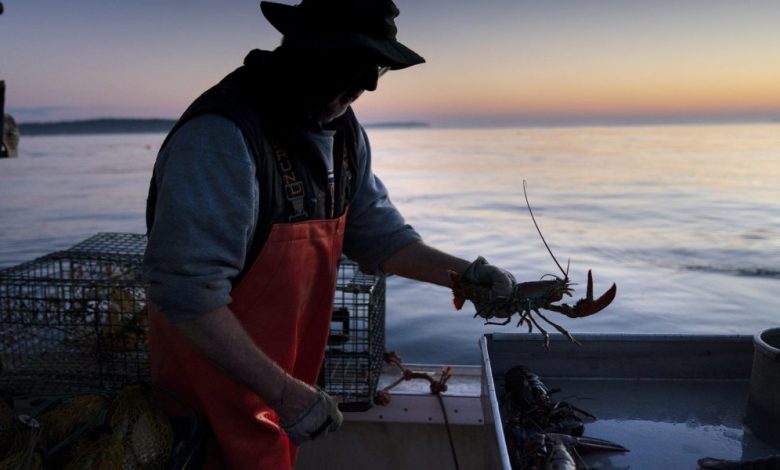Maine lobster fishermen are clipped by inflation as 2022 results fall nearly 50%

Fishers of Maine lobster, one of the most lucrative seafood species in the US, had a smaller catch in a year when the industry grappled with rising fuel and bait prices, reprimands from major retailers and the looming possibility of new catch limits.
The value of Maine lobster has exploded in recent years, in part due to growing international demand from countries like China. The industry brought about 98 million pounds of lobsters worth about $389 million to docks in 2022, Maine regulators said Friday. That was down more than 11% from the previous year, when more than 110 million pounds of lobster worth more than $740 million were harvested.
Lobster’s value also fell to just under $4 a pound at the docks, its lowest since 2017, a year after it set a record of more than $6.70 in 2021.
The industry has seen growth in recent years as fishermen have caught more than 96 million pounds of lobster a year for 13 straight years, having never reached that mark before. But it’s also grappling with threats like proposed rules to protect rare North Atlantic right whales, which are vulnerable to getting caught in fishing gear.
Last year was a “really stable season” for the most part, but the high price of deals and a drop in the price per pound of lobster were challenges, said John Tripp, a St. George fisherman.
“It’s going to be quite costly to do what we’re doing,” Tripp said.
Last year’s lower price for fishermen did not necessarily translate into lower prices for consumers, as lobster remains a premium seafood product. Fishermen are typically paid $4 to $5 a pound for their catch, while retailers often charge consumers more than double that.
Potential threats to the industry include warming in the Gulf of Maine, a key fishing area off New England. According to scientists, the Gulf experienced its second warmest year on record last year.
“Maine lobster fishermen faced tremendous uncertainty about their future last year because of pending state whale regulations, compounded by the high cost of bait and fuel,” said Maine Gov. Janet Mills, a Democrat. “Nevertheless, they landed nearly 100 million pounds of high-quality Maine lobster, which reflects the resilience of this industry in the face of a difficult and dynamic economic environment.”
The lobster fishing business has also lost some customers after sustainability organizations suspended their industry certifications over concerns about threats to whales. Retailers, including Whole Foods, said they would stop selling Maine lobster after the Maine Stewardship Council and Seafood Watch groups withdrew the certifications.
Some scientists and conservationists have urged state regulators to address the threat to whales more urgently. The whales are also prone to collisions with large ships.
“With fewer than 350 individuals remaining and declining numbers, North Atlantic right whales are critically endangered,” wrote a group of conservationists including Peter Corkeron, a former scientist with the National Oceanic and Atmospheric Administration, in a February issue of Science journal.
The vast majority of US lobster comes to docks in Maine, although some also make landfalls in Massachusetts, New Hampshire and further south. Canadian fishermen also catch millions of pounds of the same species off the country’s eastern provinces.
Learn how to navigate and build trust in your organization with The Trust Factor, a weekly newsletter exploring what leaders need to succeed. Login here.



